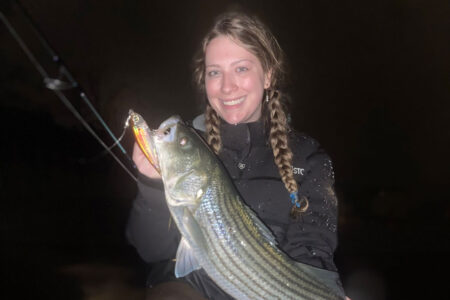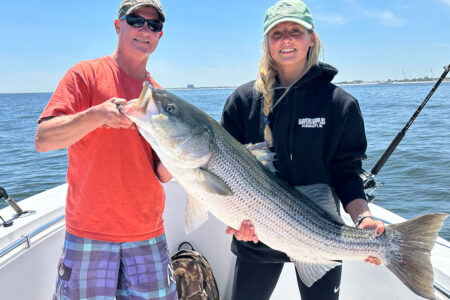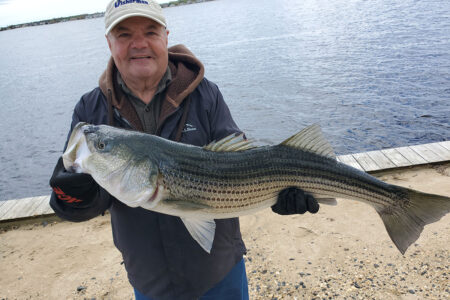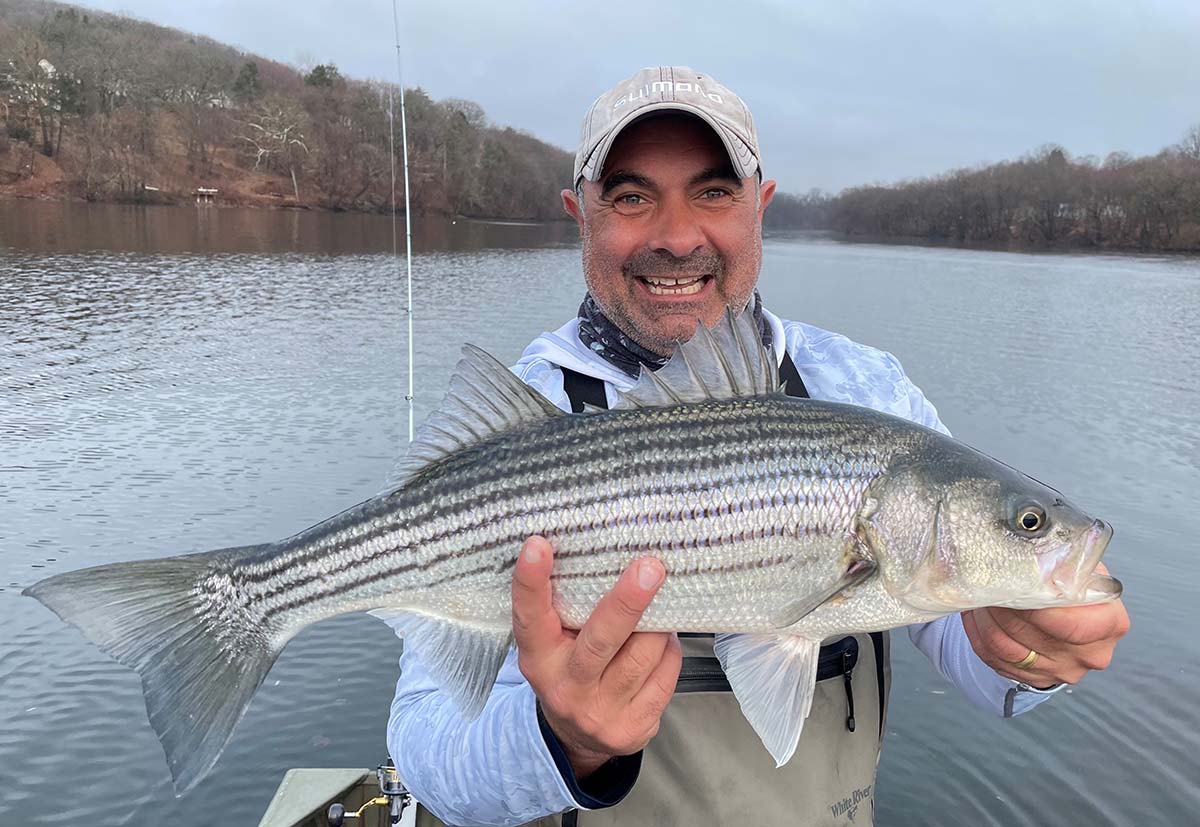
The onset of the herring run wakes up Housy stripers in a big way!
As winter turns to spring, and the days begin to grow longer, fishermen start to get antsy, anticipating an approaching change with regard to how we target striped bass. It’s almost like spring training for fishermen and there is no better place to shake off those winter cobwebs and get your season started then on the Housatonic River.
I’ve had the opportunity to fish the Housy from fall through spring over the years and this change from winter to spring and the resulting change in tactics is something that I’ve begun to document very closely. This change happens every year, but the timing can vary, resulting in some years being more productive than others. But when it happens, it always seems to kick off the fishing marathon that lies ahead as warmer days approach.
Three Phases
There are three distinct phases between late fall and spring in the Housatonic River. The “Arrival” marks the return of large schools of stripers that have spent their summers across New England. As they enter the river, they terrorize any remaining bunker by the mouth and then run miles up the river chasing any bait they can find with reckless abandon. These fish are continuing to “fatten up” for the cold months ahead, attacking virtually any soft plastic or swimming plug cast in their vicinity. This stage lasts well into December until the water temperatures plummet into the mid-30s.
Once the water temperature drops, we enter the traditional “Holdover” period. During this phase, the stripers are much more subdued and selective in what and when they will eat. Typical natural prey during this period would be alewives and juvenile white perch. The wintering stripers tend to stack up in dense schools that can sometimes be 15 to 20 feet thick and several-hundred feet long. The fish are lethargic and tend to stay in the lower portion of the water column. They will feed more aggressively after a heavy rain or a sudden spike in temperature, but once the chill of winter returns, they will switch back into lockjaw mode. Traditionally the sedative behavior is most prevalent in the coldest months of January and February. As we turn the calendar to March, with more rain and moderating temperatures the bite slowly begins to improve.
As buds begin to appear on the trees and flowers push up through the previously-frozen earth, we begin to enter the third phase on the river, or as I like to call it “The Awakening”. This phase often begins in late-March (or early April after colder winters) and can last well into May or even June on the best years. The impetus for this change to aggressive feeding is both warmer water and the arrival of river herring. The herring run up the river each spring to spawn and these over-wintering stripers, along with some early-migrators, rely on this run of anadromous baitfish as a kickstarter feast, after a long and lean winter.
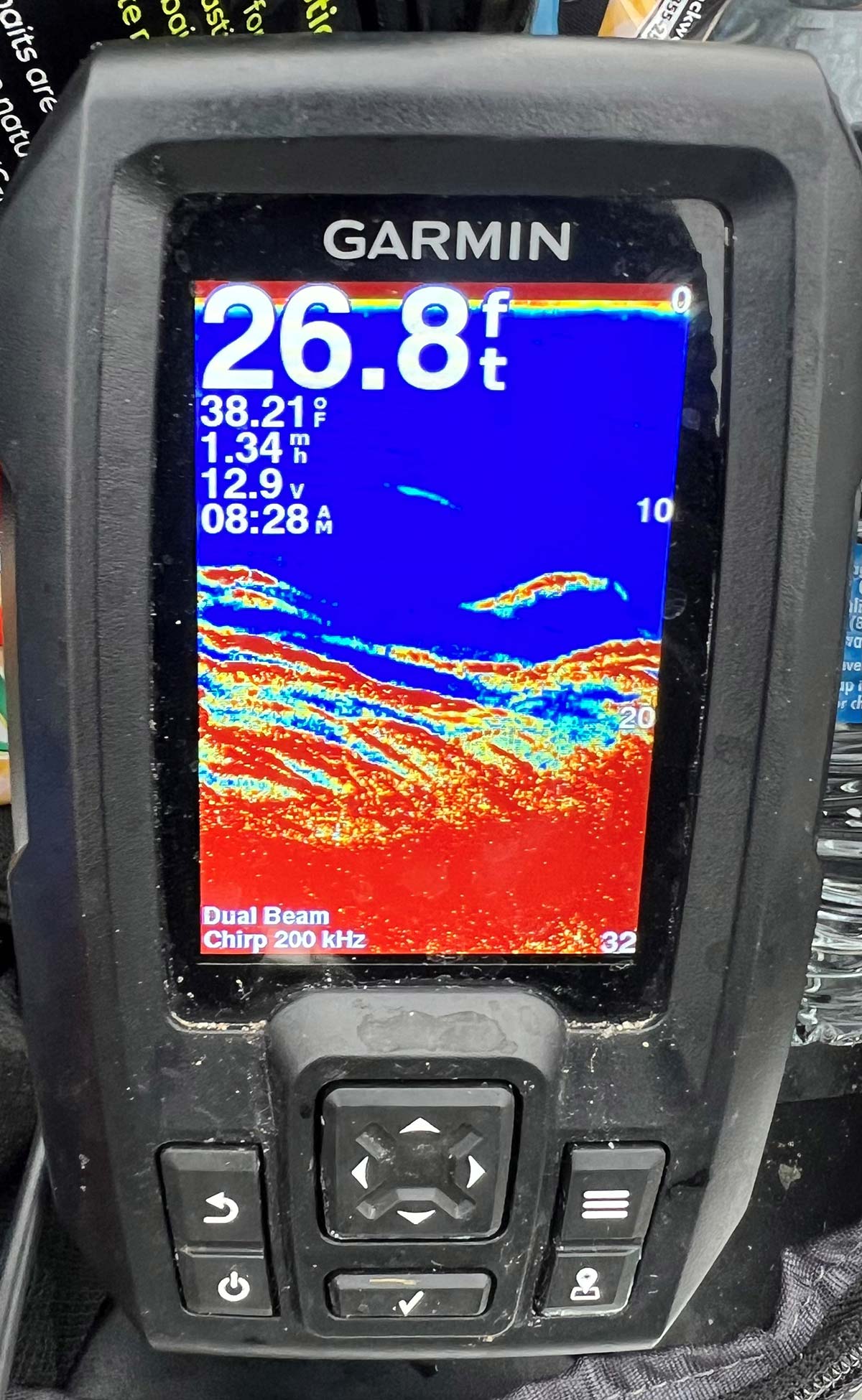
What To Look For
With the herring beginning to migrate up the river, there are certain indicators that signal when the river is about to come to life. The schools of stripers that were previously hunkered down in coves or other protected areas will begin to move freely throughout the river. As stripers tend to school by size, it will be the schools with larger fish on average that will be keying in on the adult herring. These schools will begin to position themselves in areas where the herring will traditionally spawn. The key to finding the herring is to look for areas where the water is moving more quickly such as confluences, rocky outcroppings, or areas with sudden depth changes. Any natural or manmade obstructions such as dams will cause the herring run to temporarily pause and these areas represent an incredible ambush opportunity for hungry stripers.
As the bass begin to put pressure on the herring, gulls and other birds will become active near the surface. In the mid-spring, if you find bird activity on the river you will typically find bass on herring. Topwater action will be another telltale sign that the bass are on the herring. During this time of year, common and mirror carp are spawning and making large splashes in the river, so make sure you know what you’re throwing at! Herring will run into extremely shallow water, so also look for visible indicators of their presence. In clearer water they can easily be identified by their bluish upper hue and silvery scaled sides. Where you see one, you will typically see many. Once you find the herring, you can bet that there will bass nearby and this is when you should switch your offerings over to mimic the herring.
Tactics And Baits
The Housatonic is a large and deep river that offers many opportunities for keying in on bass chasing herring. I’ve had the opportunity to fish the run from both shore and boat over the years. One of my earliest memories of fishing the Housy herring run happened more than a decade ago. As I think back about that specific run it was one of the best years in terms of finding a pattern that stuck for several weeks. I happened upon a section of the upper river where a major currents were converging and in mid-May I found a large congregation of surfcasters firing large pencil poppers out into the rip. One of the regulars showed me how to spot the herring in the shallower water and helped me understand what to use.
Observing the crew in the river, it was not long before several of their lines were tight with fish to the low 40-inch class. For this type of topwater fishing, you will want a 5000 series reel with an 8- to 9-foot, medium-heavy, fast-action rod to get that popper out to the fish. I typically run 30- or 40-pound braid with a 25- to 30-pound fluorocarbon leader and a tactical clip to quickly swap out poppers and swimming plugs. Back then I was using very basic pencil poppers for the bite, but I’m equally sure that lures to today’s standard such as the Doc, Shimano Splashwalk, Cotton Cordell Redfins, or SP Minnows would be up to the task. That week was my first taste of a multiple day spring Housy topwater bite and that lit a fire that has kept me coming back season after season.
In recent years I have had more regular access to boats which has allowed me to cover more of the river. The past few springs I have been keyed in on bass feeding on herring in areas that allow me to drift while working larger lightly weighted plastics in the vicinity of migrating herring. When fishing these drift areas which are focused on faster moving water over a noticeable depth change, I prefer to throw larger profile plastic lures such as Slug-Go’s, Super Snax, GameOn Lures “Big Occhi’s”, or Zinger Baits Bomba Shads. Whereas during the colder winter nights I would fish these same baits with 3/4- to 1-ounce jigheads off the bottom, I’m letting the current work these baits and presenting them near the surface. I tend to favor colors like pearl white, albino, alewife or shad during the daytime hours and darker colors pre sunrise or post sunset in these same areas. When traversing the river by boat, I’m also looking for those visible indicators such as breaking fish or diving birds to help me identify sudden blow-ups that can pop up at any time. These opportunities certainly present the most exciting moments of the herring run.
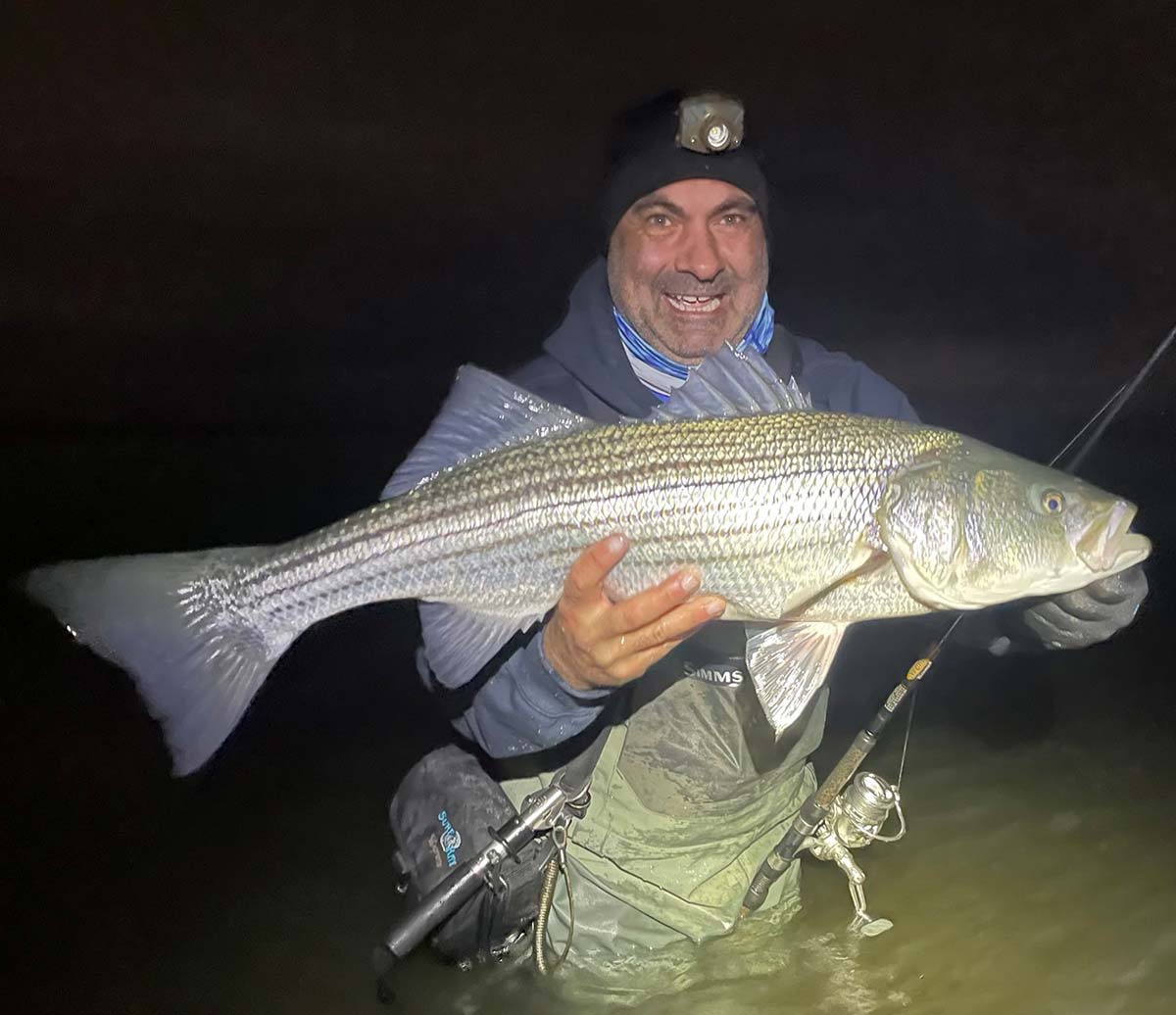
Expert Advice
I recently had the opportunity to catch up with Housy veteran Jason Jadach, owner of Bobby J’s Bait & Tackle in Milford CT, about the transition to the herring run. Jason has been fishing the river for many years and always has a prime point of view on how to get the most out of your river session. “As the season’s shift, I begin to switch my presentation and size of baits on a more regular basis. In the winter you will get bigger fish on the larger baits, but they are far and few between. By late March and early April as the bigger bait starts to show, the fish begin to opt more frequently for a bigger lure presentation. Along with presenting a larger bait, retrieval speed will make or break your outing. Upping your jig head weight is a good way to increase the speed of your retrieve while keeping the lure in the ideal strike zone as long as possible.”
For anyone who prefers to skip the cold of winter but who is looking to get a jump start on their 2023 striper campaign, the countdown has begun. It won’t be long before the herring run will begin and if you have the will and opportunity, you should be there. Now is the time to re-spool your reels, swap out hooks and set up your plug bag for the herring run. Fortune favors the prepared, and just like the change of seasons, the annual arrival of herring is something we can count on every year. I wish you luck in chasing these early season bass as they feed on herring and throughout the rest of the 2023 season.
